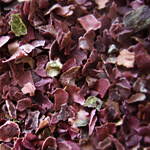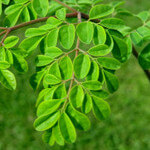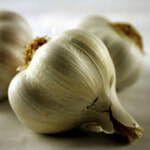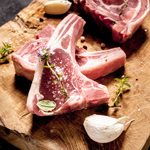 Dulse is a spicy-flavored red seaweed that grows on the coasts of the Pacific and Atlantic oceans. Popular in East Asia, dulse has been harvested for thousands of years as a nutritious food source, an ingredient in skin care products, and as a health supplement. It is available in most health food stores in fresh or dried form.
Dulse is a spicy-flavored red seaweed that grows on the coasts of the Pacific and Atlantic oceans. Popular in East Asia, dulse has been harvested for thousands of years as a nutritious food source, an ingredient in skin care products, and as a health supplement. It is available in most health food stores in fresh or dried form.
List of Health Benefits
Good source of protein – According to Dr. Subhuti Dharmananda, the director of the Institute for Traditional Medicine, red seaweeds such as dulse can contain up to 40 percent protein. This makes dulse (along with other sea vegetables such as nori and bladderwrack) one of the best plant-based sources of protein in existence, and ideal for vegetarians and vegans. Protein is, of course, needed to build and repair tissue, and serves as the “building blocks” for bones, muscles, cartilage, blood, and skin.
Fatty acid content – Dulse contains unusually high amounts of polyunsaturated fatty acids, including EPA and DHA (which are omega-3 fatty acids, and normally found in fish). According to studies, the ratio of dulse’s n-6/n-3 fatty acids is one, which is optimal.
Antioxidant properties – According to a study published in the Journal of Food Chemistry and Toxicology in July 2005, dulse contained the highest polyphenol content, and the greatest inhibitory effects on rapid cell growth, than any other red or green seaweed. Consequently, dulse is starting to be taken seriously by many anti-cancer researchers.
High in potassium – One cup of dulse (21 grams) provides us with approximately 1641 milligrams of potassium, which is 48 percent of our recommended daily intake (RDI). Potassium works as an electrolyte that helps to relay nerve impulses between the central nervous system and the body, making it essential for a healthy heart.
Dietary fiber content – One cup of dulse provides us with six grams of fiber, which is 24 percent of our RDI. Fiber helps to absorb water from the intestine, which helps us to feel full quicker. This fiber content, coupled with dulse’s low calorie and fat levels, makes dulse an extremely effective weight loss food as well as a potent natural laxative and cure for constipation.
Rich in iodine – According to the Linus Pauling Institute at Oregon State University, the RDI of iodine for men and women is 150 mcg/day. Dulse contains an average of 72mcg/g, meaning that just two grams (or half a teaspoon) of dulse is enough to reach our RDI of iodine. Iodine deficiencies are extremely common in today’s society, and can lead to hyperthyroidism and goiter.
High in iron – One cup of dulse provides us with 67 percent of our RDI of iron, another important trace mineral in which many people are deficient. Iron works with protein to create hemoglobin in the red blood cells, which in turn carries oxygen from the lungs to the body’s cells.
Skin care properties – Due to its vitamin and mineral content, dulse makes an excellent skin nourisher. It is often ground into a fine powder and used in facial masks, or used on its own as a exfoliant. When applied topically, its vitamins and minerals enter the skin, thereby nourishing it and improving its complexion.
Aside from the nutrients mentioned above, dulse is also rich in calcium (one cup provides us with six percent of our RDI), magnesium (18 percent), zinc (6 percent), chromium (27 percent), vitamin A (6 percent), and varying levels of most of the B-vitamins.






